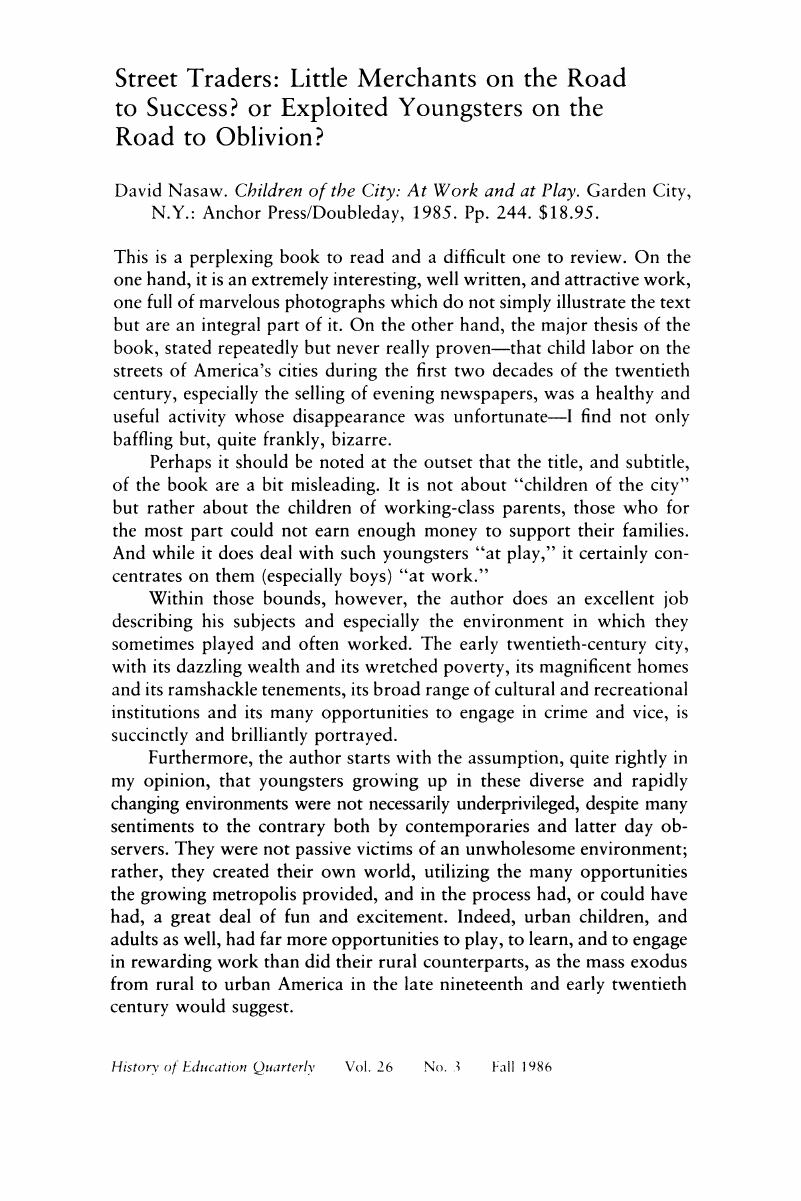Published online by Cambridge University Press: 24 February 2017

1. When, on one occasion, Nasaw refers to a six-year-old boy selling newspapers on a street corner in bad weather, he writes approvingly of the child, who allegedly was helping his bigger brothers—and by implication also was insuring his own success later in life. See p. 160.Google Scholar
2. Trattner, Walter I., Crusade for the Children: A History of the National Child Labor Committee and Child Labor Reform in America (Chicago, 1970), 109–16. Also see Felt, Jeremy P., Hostages of Fortune: Child Labor Reform in New York State (Syracuse, N.Y., 1965), 153–64; and Clopper, Edward N., Child Labor in City Streets (New York, 1912), the best contemporary account of street trading and all of its ramifications, written by the person Nasaw refers to as “a reliable if somewhat histrionic reporter.”Google Scholar
3. See Goldmark, Josephine C., “Street Labor and Juvenile Delinquency,” Political Science Quarterly 19 (Sept. 1904): 417–38; National Child Labor Committee, Newsboy Life: What Superintendents of Reformatories and Others Think about Its Effects (New York, 1910); “Street Trades and Delinquency,” Survey, May 20, 1911; Clopper, Edward N., Street Work and Juvenile Delinquency (New York, 1914); and “Child Labor in Street Trades,” Annals of the American Academy of Political and Social Science, 35, Supp. (Mar. 1910): 139; Hall, Fred S., “Child Labor and Delinquency,” Child Labor Bulletin, 3 (Nov. 1914): 37–51; Lindsey, Ben B., “Juvenile Delinquency and Employment,” Survey, Nov. 4, 1911, 1097–1100.CrossRefGoogle Scholar
4. In the preface Nasaw states that he relied heavily on biographies and autobiographies, the “most numerous and most valuable” of which “were … books by and about entertainers and celebrities.” Also, it should be mentioned that he frequently quotes trade journals, especially Editor and Publisher, on the virtues of young children hawking newspapers, hardly disinterested and objective sources.Google Scholar